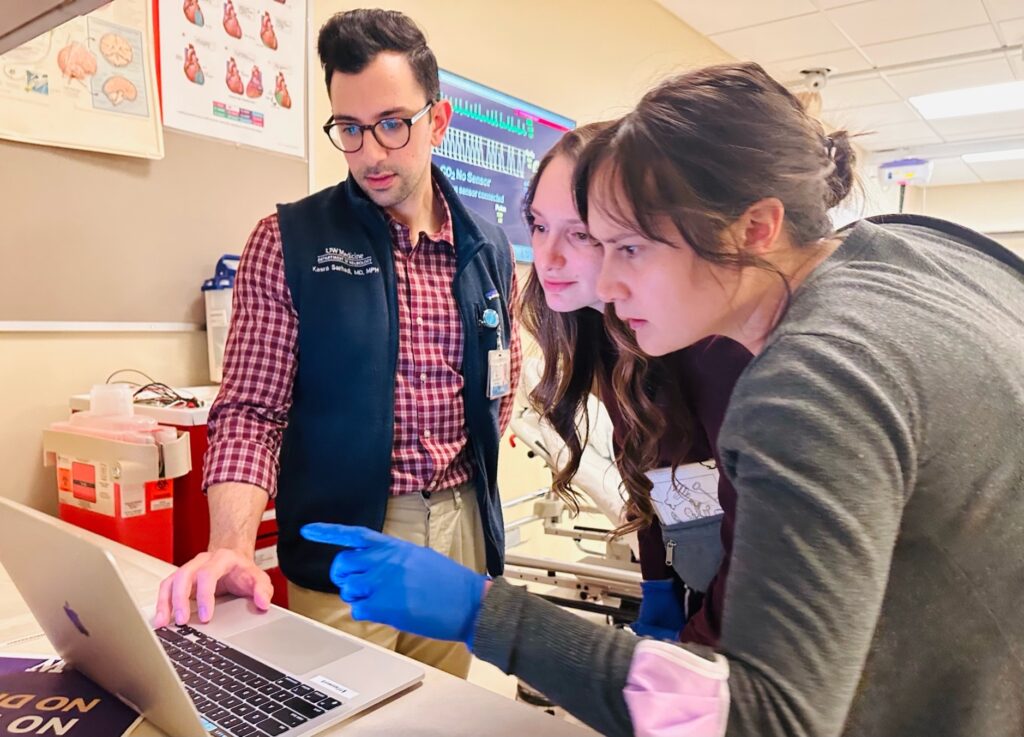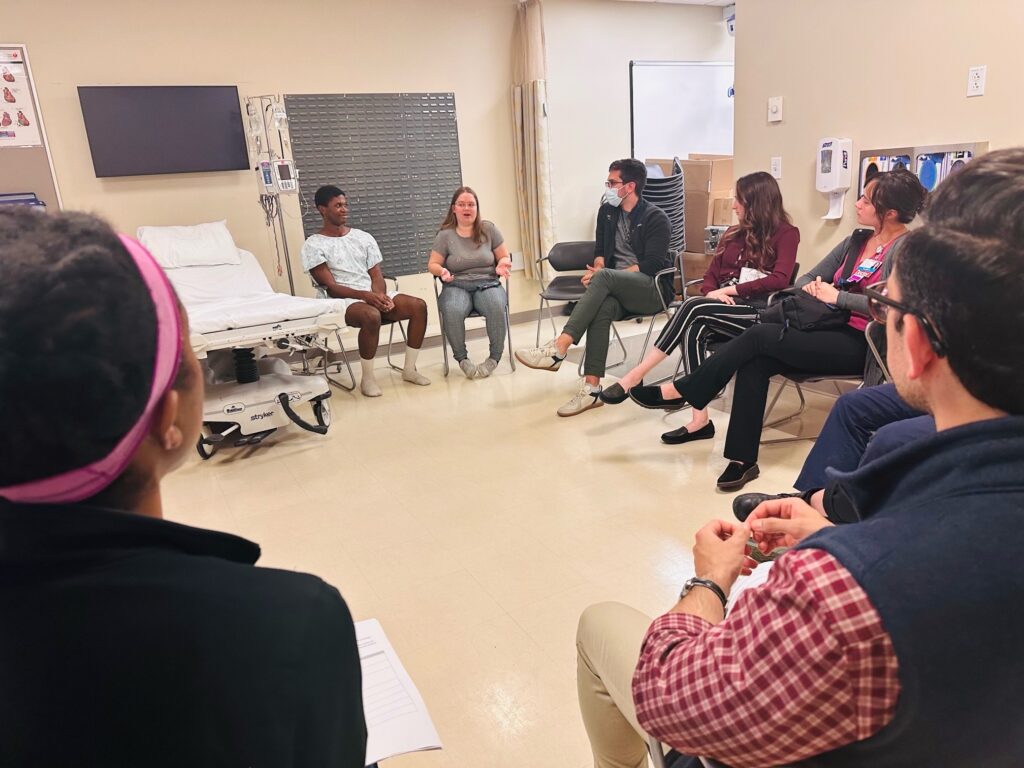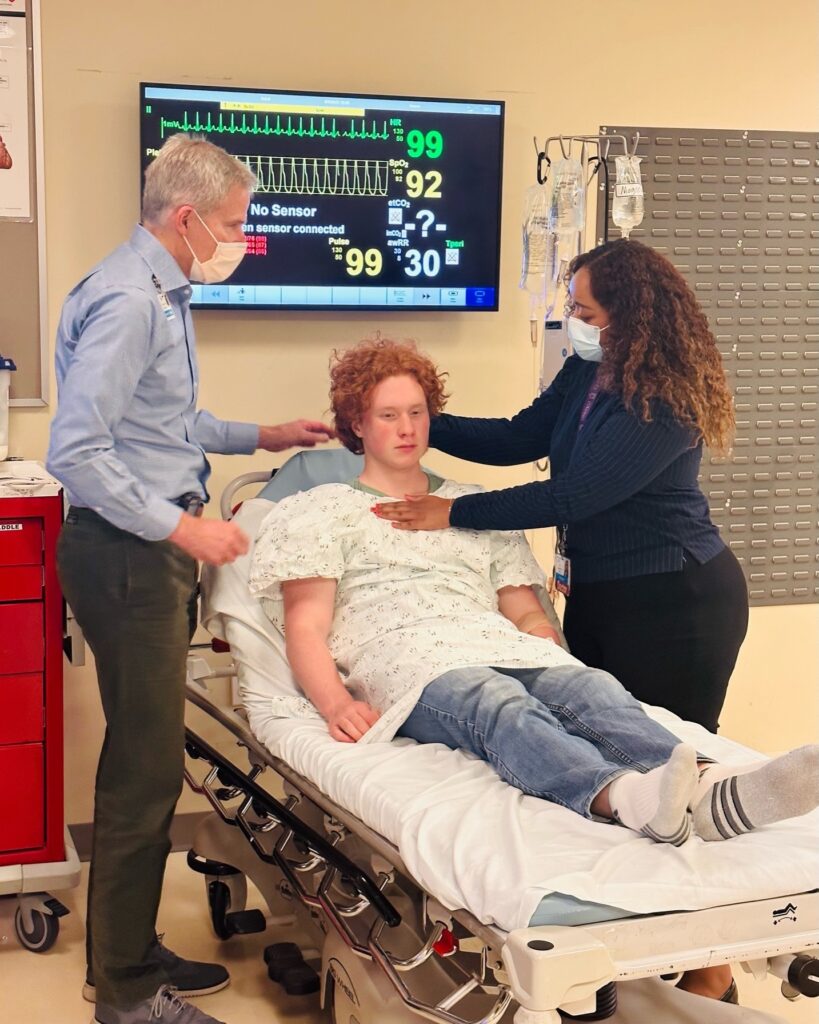Didactics/Teaching
The most important, high yield learning is done at the patient’s bedside, on rounds, and in clinic. Our faculty are committed to this type of “real time” teaching and understand that contemporaneous discussions about live patients are valuable learning opportunities.
Formal didactics are also an integral part of developing a broad command over the ever-expanding field

of Neurology. There are numerous conferences open to our residents each week. Conferences within our department include neuro-oncology case conference, epilepsy case and research conference, and neuromuscular biopsy conference. Popular conferences outside our department include: sleep conference, chest conference and cardiology conference.
In addition to the weekly and monthly conferences at each hospital, we also provide protected learning time. During scheduled didactics on Tuesdays for juniors and Thursdays for seniors, residents pass off their pagers so that they can focus solely on learning.
Tuesday 3:00-5:00pm: Dedicated teaching for the juniors. A one-year curriculum focusing on basics of both inpatient and outpatient neurology is covered during the first hour. The second lecture also includes journal club, clinical conference, and quality improvement conference.
Thursday 3:00-5:30pm: Dedicated teaching for the seniors. A two-year curriculum that goes beyond the basic foundations developed during the junior year. The third session is the Neurology Department Grand Rounds.

Other Conferences:
Tuesday: Noon report held at the VA, UWMC, HMC.
Wednesday noon: A rotating clinical conference that covers stroke, neuromuscular, epilepsy, movement disorders, and neuropathology.
Friday afternoon: Stroke didactics followed by clinical stroke conference. Clinical stroke conference is a unique forum where our vascular neurologists convene to discuss interesting or challenging cases while reviewing imaging with a neuroradiologist.
Resident Teaching:
Residents play a crucial role in educating their co-residents, interns, students and also their attendings and patients. As trainees progress through residency they are expected to provide progressively more extensive teaching to others. There are many opportunities for “on the fly” teaching, as well as informal presentations when on inpatient services. There are also ample opportunities for formal presentations; residents give patient clinical conferences, present articles at journal club (along with a faculty mentor), prepare a neuropathology clinical patient correlation, prepare presentations for the junior resident didactics, and prepare a quality improvement presentation during the N3 year. Residents frequently are able to present their talks at outside forums including local, national, and international conferences.
“Month of Learning,” i.e., Transition from intern year to N1:

Our program recognizes the importance of the challenging yet exciting transition from the first year of residency to the first year of neurology. The last month of intern year for all of our incoming neurology residents is a dedicated didactics block. During this time our residents spend the mornings learning neuroradiology and the afternoons are devoted to a lecture series focusing on core topics in neurology that ease the transition from the medicine intern year to the world of neurology.